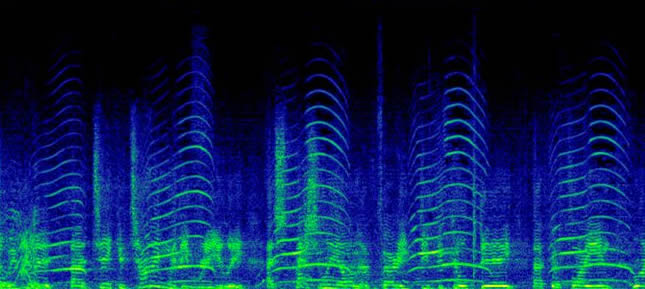 aII p2
aII p2
|
introduction to electroacoustic music
 aII p2 aII p2 |
Expanding upon the assignment using assign_2_3.aif (superball mallet being dragged)
¥ Answer the following questions using the terminology introduced in the lectures:
.jpg)
(1) Amplitude: Describe the amplitude shape. Is the sound continuous? How would you characterize the attack, steady state and decay? Is there an internal rhythm to the sample? What other observations?
The sample has a slow attack (0- 0.4), a fairly constant steady state amplitude (.4 - roughly 3.0) and a slow decay.(3.2 -3.9). There is no internal rhythm, the steady state or sustain has a consistent amplitude and no periodic elements. For the most part the sample has a wide dynamic range though it is mostly between -12 and -6 db. It appears loud. At 3.2 there's a distinct "clunk" which disturbs the steady state sustain portion and the sound suggests wood being struck.
(2) Frequency: Is the sound pitched or unpitched? Is it harmonic, inharmonic or noise based? Describe it in terms of frequency range (if possible).
Portions of the sound are distinctly pitched - though the pitch varies over time. It begins with a short unpitched section (until 0.4) and then there's a distinct descending pitch (0.4 -1.0) followed by a steady pitch (somewhere between 100 - 200 Hz) followed by a rise in the pitch at about 3.0 - 3.2. The pitch material ends with the clunk at 3.2. Based on the sonogram, much of the energy (yellow colour) is in the 100 - 600 Hz range with some harmonics appearing louder from 1.0 - 2.4 in the 600 - 2,000 (2k) range. There is not much material over 3K. I would characterize this as being mostly low to mid range in its frequency range. Perceptually it reminds me of the bellow of a large beast.
(3) Timbre: Describe the sound's timbre - bright? dull? muted? piercing? other words? Where is the centre or centres of spectral energy in the sound? Is this centre/centres different from its predominant frequency or pitch?
The overall timbre is a low to midrange horn-like moan, It is not unlike the sound of an animal horn (ram) being blown. It is strong, emphatic, and mostly pitched with its spectral energy centred in the 100 - 400 Hz range. This centre is exactly the same as the fundamental of the pitched material or the predominant frequency one perceives. It is piercing but not shrill.
¥ Analyze the files with a spectrograph or sonograph and respond based on your interpretation of the image:
.jpg)
(4) Where (time/frequency) is the dominant energy of the sample? Why?
From 0.5 sec - 3.1 seconds the dominant energy is in the 100 - 600 Hz range. This is where the fundamental pitch lies and where (as one can see with the yellow signifying highest intensity) the dominant energy is.
(5) Does the sound change over time? Describe how using terms from [A]
Not very much at all. In terms of its dynamic envelope, there is a short and noisy slow attack as the superball gathers energy and begins its vibration. From then on until the "clunk" at 3.2 seconds there are slight variations in amplitude until the slow decay at the end. Besides the attack and decay portions, the timbre is pretty consistent - with very little variation in its fundamental frequency or pitch until the end when the energy dissapates and the superball loses its distinct pitch.